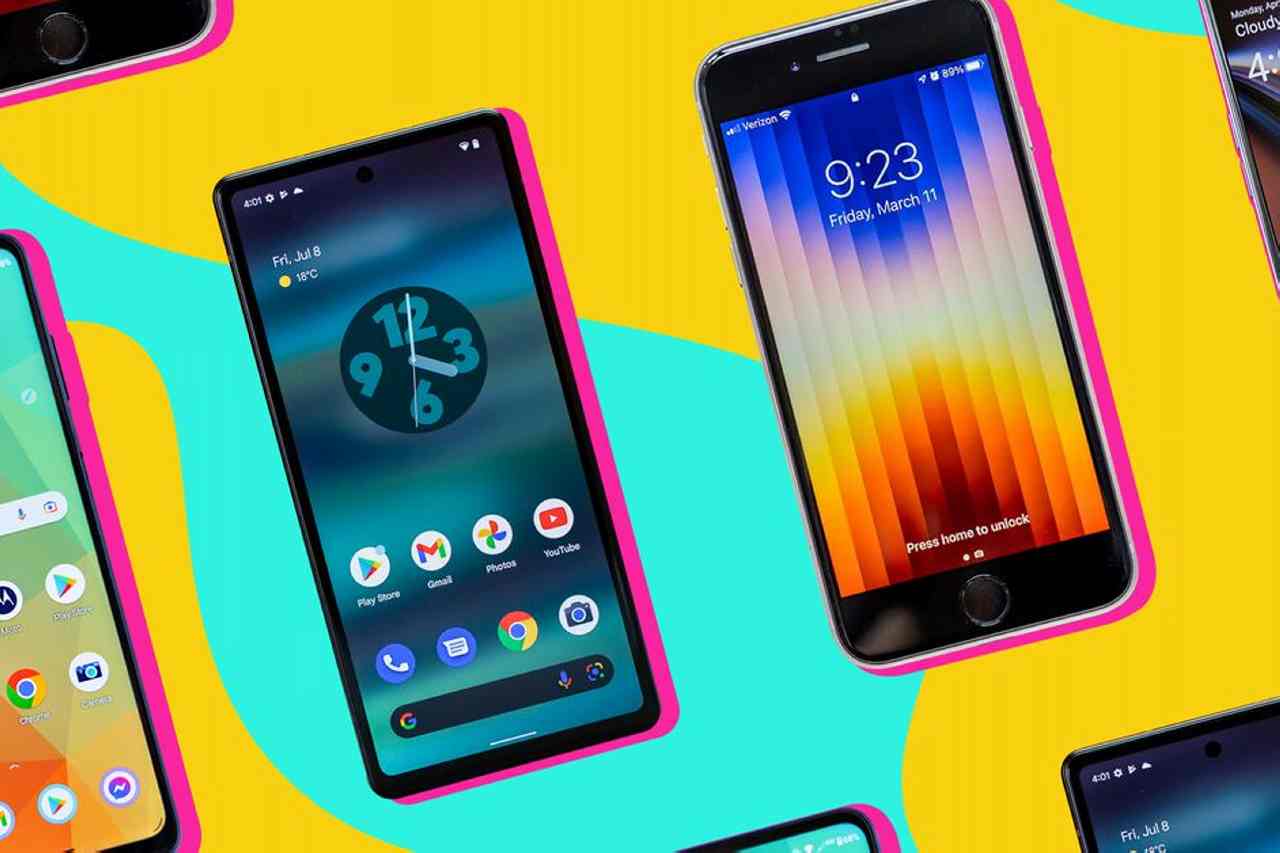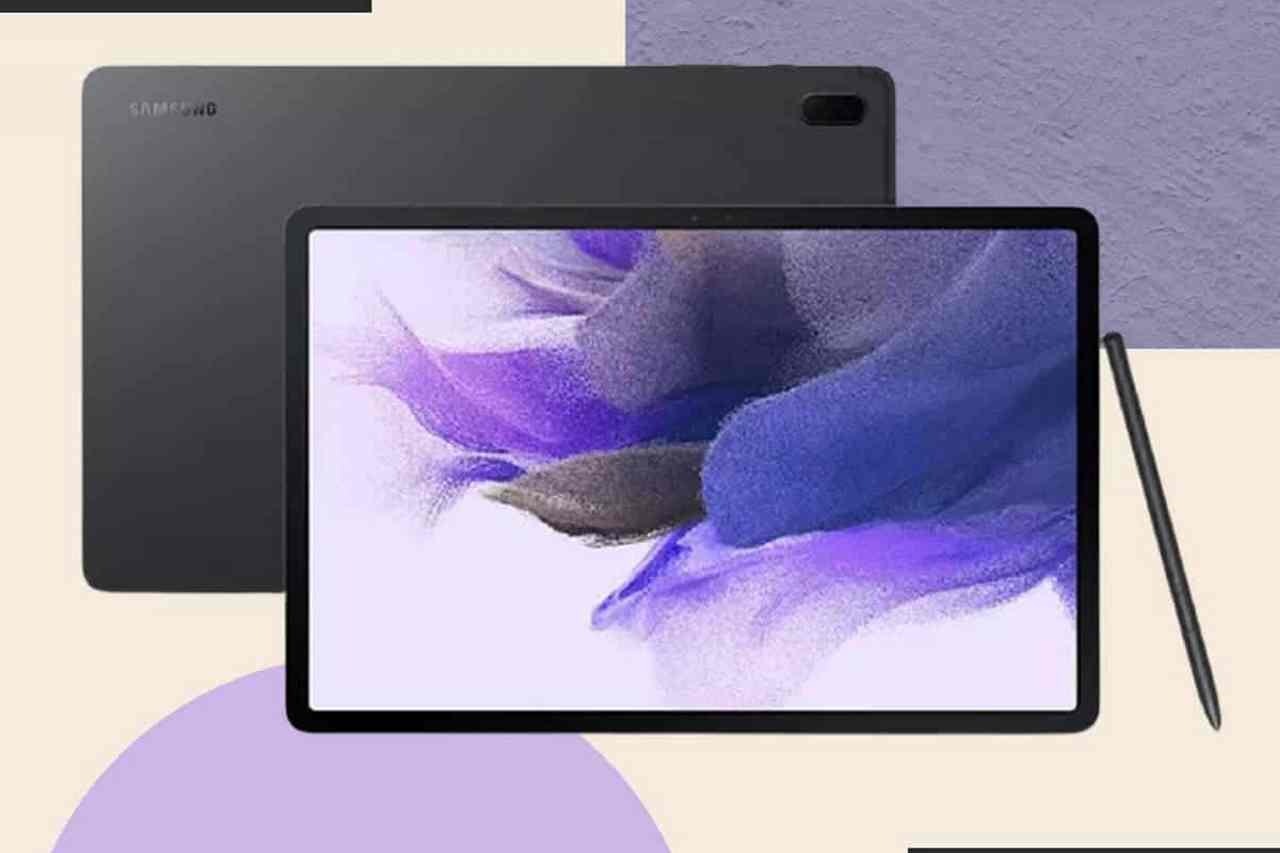You can’t set foot in a wireless retail store without being bombarded by “free phone” offers. And while there’s certainly nothing wrong with taking a free phone deal, there are almost always lots of strings attached. Paying out of pocket means you’ll have much more freedom, but the sky-high prices on flagship phones mean that’s not an option for everyone.
Budget phones to the rescue. These devices are roughly $500 or under, making them much more appealing if you want to buy your phone outright or keep your monthly payments low.
What I’m looking for
- Strong software support: At least a couple of years of OS upgrades and, ideally, three years of security updates. There’s no point in buying even a cheap phone if you have to replace it after just a couple of years because it stopped getting security patches.
- A good screen: Since you look at it roughly two thousand times a day, your phone’s screen is one place you shouldn’t compromise. An OLED has richer contrast and color than an LCD, and the big screens on today’s phones really need at least a 1080p resolution. Faster refresh rates like 90Hz and even 120Hz are becoming more common on budget phone screens, but for my money, a smooth-scrolling LCD doesn’t look as nice as an OLED with a standard refresh rate.
- Serviceable storage space: If you plan to hang onto your phone for a while, you’ll want enough storage space to accommodate all the system files, photos, and videos you’ll accumulate over the years. Ideally you’ll get at least 128GB built in, but at a minimum I look for 64GB with the option to expand space via a MicroSD card.
- One good rear camera, not four mediocre ones: Upgrades like telephoto cameras and optical image stabilization are rare in the under-$500 class, but you can still expect good, basic performance in good lighting from any modern smartphone. Low light is trickier. Phones in this class should offer a night mode to help with non-moving subjects in very dim light. And there are no bonus points awarded for adding extra macro and depth cameras to pad out the rear camera array — those 2- and 5-megapixel sensors are pretty much useless.
Many of our picks run about $400 or $500, but there are great options for $300 and under, too. You can find a bright, high-definition OLED screen or a battery that lasts for days. If you can hone in on the one or two features that are most important to you and you’re willing to compromise elsewhere, you can get a phone that suits your needs for half the price of a flagship.
Related
- The best phone to buy right now
- The best Android phone to buy in 2023
What compromises can you expect from a budget phone? Some combination of the following: slower processors, less storage, and lousier cameras than flagship phones, almost across the board. Many have lower-resolution screens, and most lack official water-resistance ratings, wireless charging, and NFC chips for contactless payment.
The best iPhone under $500
iPhone SE (2022)
$429
The 2022 iPhone SE will last for over five years if it’s taken care of thanks to Apple’s excellent track record of offering iOS updates to older devices. But its tiny 4.7-inch screen feels cramped now and may be tough to use in five years’ time while apps and webpages continue to be designed for bigger screens.
$429 at Apple$429 at Amazon
Screen: 4.7-inch, 1334p LCD / Processor: A15 Bionic Cameras: 12-megapixel f/1.8 with OIS, seven-megapixel selfie / Charging: 20W wired, 7.5W wireless / Weather-resistance rating: IP67
The 128GB iPhone SE is the best value on the smartphone market, period. It’s a great deal at $479 when you consider that it will continue receiving iOS updates for upwards of five, even six or seven years.
But before you pick up an SE expecting to coast through most of the next decade without buying a new phone: make sure you can live with its very small, very dated 4.7-inch screen. It’s the same size as the one on the iPhone 6, and it’s starting to feel cramped in an age when apps and web pages are designed for bigger screens. The SE’s big bezels make the device look dated, too, but the usability of a small screen will be a bigger factor over the years to come.
That’s the biggest knock against the SE. Otherwise, it’s a fantastic midrange device. Its A15 processor is the same as iPhone 13 Pro Max, so performance is excellent. There’s IP67 waterproofing and wireless charging — both uncommon in this price range — and even though it uses the same 12-megapixel camera that iPhones have used since the dawn of time, it takes very nice photos and high-quality video clips. The camera has no night mode, which is a curious omission — many other midrange phones offer some sort of low-light photo mode, and the phone’s processor is certainly up to the task. Apple gonna Apple.
This generation SE offers 5G connectivity — just low- and mid-band, which is fine. You won’t get the fast millimeter-wave 5G you might encounter in an NFL stadium, but it’s nothing to lose sleep over. Battery life is also improved over the last generation, and it will generally last a full day unless you really push it with demanding tasks like gaming and streaming video.
If you can live with the small screen and you aren’t bothered by the lack of night mode, we recommend picking up the 128GB version. The base model’s 64GB of storage isn’t quite enough, and you’ll be glad you spent the extra $50 when you’re using this phone for years into the future.
Read my full review of the Apple iPhone SE (2022)
The best Android phone under $500
Google Pixel 7A
$496
The Pixel 7A includes several features that are hard to find for around $500, including wireless charging and an IP67 rating for dust and water resistance. It’s not the cheapest phone in the class, but it’s the one that’s best suited to go the distance.
$499 at Google$499 at Best Buy$496 at Amazon
Screen: 6.1-inch, 1080p OLED, 90Hz / Processor: Tensor G2 Cameras: 64-megapixel f/1.89 with OIS, 13-megapixel ultrawide, 13-megapixel selfie / Battery: 4,385mAh / Charging: 18W wired, 7.5W wireless / Weather-resistance rating: IP67
The Google Pixel 7A raises the stakes for what you can expect from a midrange phone. At $499, it’s right at the top of what we’d consider “budget” — and a bit more expensive than its closest competitor in the US: the $449 Samsung Galaxy A54. But with a class-leading camera and flagship-esque extras like wireless charging, it’s a step ahead of anything else in the midrange bracket.
One of the 7A’s major upgrades is a new 6.1-inch, 90Hz display, which makes animations and scrolling look much smoother than on last year’s 60Hz panel. The 7A uses the same Tensor G2 chipset that’s in the flagship Pixel 7 and 7 Pro coupled with a healthy 8GB of RAM. That translates to excellent performance for day-to-day tasks and even heavy lifts like gaming. The 7A is tougher than your average midranger, too, with an aluminum frame and an IP67 rating for resistance against dust and dunks in water.
Battery life is good enough to get through a full day with moderate use, but if you add an extended gaming session, you might need to top it off before bedtime. Wireless charging is available, which is extremely rare in the budget phone class. If you already have a wireless charging habit, then the 7A will fit right into your routine.
The camera is where the Pixel 7A really shines. It’s based around a new 64-megapixel main camera with optical stabilization along with a capable ultrawide. It’s not everything you would get from a flagship camera — no video portrait mode or telephoto lens — but it’s reliable even in dim lighting conditions where competitors like the A54 struggle.
Read my full review of the Google Pixel 7A.
The budget phone with the best screen
Samsung Galaxy A54 5G
$449
The Samsung Galaxy A54 5G adopts the S23-series’ rear panel design and a couple of other flagship-esque features, starting with its 6.4-inch display.
$449 at Amazon$450 at Best Buy$449 at Samsung
Screen: 6.4-inch, 1080p OLED, 120Hz / Processor: Exynos 1380 Cameras: 50-megapixel f/1.8 main with OIS, 12-megapixel ultrawide, five-megapixel macro, 32-megapixel selfie / Battery: 5,000mAh / Charging: 25W wired / Weather-resistance rating: IP67
The Samsung Galaxy A54 5G’s best feature is its screen. It’s a 6.4-inch, 1080p OLED with a smooth 120Hz refresh rate that can almost fool you into thinking you’re using a $1,000 phone. Its camera and overall feature set don’t quite measure up to the Pixel 7A’s, but it’s a very good midrange phone in its own right and starts at a slightly lower $449 MSRP.
The A54 is built with durable glass panels on the back and front, and it carries an IP67 rating for protection against dust and immersion in shallow water. It’s also backed up with a robust software support policy. Samsung promises four years of OS version upgrades and five years of security updates, which is one of the best policies for any Android phone at any price. There’s also a big 5,000mAh battery that can power through a full day of heavy use, but you’ll need to purchase a charger separately if you want to take advantage of its fast 25W charging speeds.
Camera quality is okay, but it’s not a strong suit. Photos and videos in good lighting look fine, but the A54 struggles to keep up with any kind of motion in low light. There’s a night mode for static subjects, but getting a sharp photo of your kid or pet in dim indoor lighting will be difficult, and the Pixel 7A is way ahead in this department.
Read my full review of the Samsung Galaxy A54 5G.
The best phone under $400
Google Pixel 6A
$349
Google’s Pixel 6A comes with a relatively small 6.1-inch OLED screen but is an excellent performer with a good camera and battery life.
$349 at Amazon$349 at Best Buy
Screen: 6.1-inch, 1080p OLED / Processor: Tensor Cameras: 12-megapixel f/1.7 with OIS, eight-megapixel selfie / Battery: 4,410mAh / Charging: 18W wired / Weather-resistance rating: IP67
With a permanent price drop to $349, the Pixel 6A is sticking around in Google’s lineup even after the introduction of the 7A. Its standard 60Hz screen isn’t as nice as the faster display on the 7A, and it comes with older camera hardware. But there’s still a whole lot to like about it, especially at its new price.
The phone’s biggest asset is Tensor, the custom-built chipset Google used in the company’s 2021 flagships, the 6 and 6 Pro. Not only does it enable very good overall performance now, but it also means that the 6A will keep up for many years to come. It’s only scheduled to get two more OS version upgrades (Android 14 this fall and 15 next year), but it’ll receive security patches until at least July 2027. The 6A also comes with an IP67 water resistance rating, so it’s still a good all-around bet if you want a budget phone that will last.
The 6A’s 6.1-inch 1080p OLED offers a standard 60Hz refresh rate. It wasn’t too impressive for the phone’s original $449 retail price, but for under $400 it’s one of the better screens out there. Unfortunately, the fingerprint sensor under the display is also on the slow side. It’s not unusable, but it’s noticeably a beat slower than the best fingerprint sensors out there. Then again, so is the one on the 7A.
The 6A uses the same 12-megapixel standard wide camera as many Pixel phones before it, which is still a very good camera — especially for the midrange class. The phone’s 4,410mAh battery is on the small side, but overall battery performance is better than its size would suggest.
Read my full review of the Google Pixel 6A.
The best phone under $300
OnePlus Nord N20 5G
$209$29930% off$209$209$29930% off
The N20 5G includes a 6.4-inch 1080p screen with a fast fingerprint sensor as well as fast wired charging with the included in-box charger.
$249 at OnePlus$209 at Amazon
Screen: 6.4-inch, 1080p OLED / Processor: Snapdragon 695 5G Cameras: 64-megapixel f/1.8, two-megapixel macro, two-megapixel monochrome, 16-megapixel selfie / Battery: 4,500mAh / Charging: 33W wired / Weather-resistance rating: none
The OnePlus N20 5G is a $280 phone that feels like it should cost a lot more. It offers a 6.4-inch screen with good 1080p resolution. Better yet, it’s an OLED panel in a category where lower-contrast LCDs are much more common. You’ll have to make do with a standard 60Hz refresh rate, but unless you’re coming from a phone with a faster 90Hz or 120Hz screen, you won’t know the difference. Refresh rate aside, it’s a good screen that’s enjoyable to use. Plus, there’s a good fingerprint scanner under the display that makes unlocking the phone a frustration-free experience.
The N20 5G is sold unlocked, but take note: it does not work on Verizon. It’s also limited to 4G on AT&T, which isn’t the end of the world given the carrier’s slow expansion of their mid-band 5G network (that’s the good 5G). The unlocked N20 does work on T-Mobile’s 5G as well as 4G, and you can buy a network-locked version of the phone directly from T-Mobile if you want to take advantage of a free phone offer or bundle the cost with your monthly phone bill.
The N20 5G is equipped with a good Snapdragon 695 processor and generous 6GB of RAM for very good daily performance. It also supports 33W wired fast charging — another feature you’d be hard-pressed to find in any of the N20’s competitors — with the included charger. You can charge the phone from 0 to 30 percent in just 20 minutes, which is really helpful if you’re in a jam and need a quick battery boost. NFC is also included for contactless payment; many cheaper phones exclude it to cut costs.
Camera quality is a bit of a weak point for the N20. The main rear 64-megapixel camera is fine; the other two cameras (a low-res macro and a monochrome sensor) are best ignored. The phone also ships with Android 11, which is a version behind most other new Android phones at this point. But on the brighter side, OnePlus is promising three years of security updates — a pretty good policy in a class where two years isn’t uncommon.
It’s unfortunate that the N20 isn’t an option for Verizon subscribers, but if you’re on T-Mobile or AT&T, it’s a heck of a deal — with or without 5G support.
Read my full review of the OnePlus Nord N20 5G.
Other budget phones we tested
We also tested the OnePlus Nord N300, which doesn’t make an appearance among our recommendations. The N300 is very affordable at $228 but cuts too many corners to include fast charging. The slightly pricier N20 that snags our recommendation above is a generation behind but offers better overall performance and a nicer screen.
We’ve also looked at two TCL phones over the past year: the TCL Stylus 5G and 30 XE 5G. The latter provides fairly good daily performance for its very low $200 price, but ultimately neither TCL phone is worth recommending over the competition from Motorola and Samsung.
Finally, the Motorola Moto G Stylus (2022) that previously appeared on this list is still being sold new but is due for replacement. It lacks 5G, but its built-in stylus is handy, and its big 6.7-inch 1080p display is nice for the price — which is well under $200 these days.
Update May 16th, 2023, 4:30PM ET: Replaced the Samsung Galaxy A54 5G with the Google Pixel 7A as the best overall Android phone under $500. Incorporated new pricing for the Google Pixel 6A. Removed the Samsung Galaxy A13 5G, which is no longer available.













